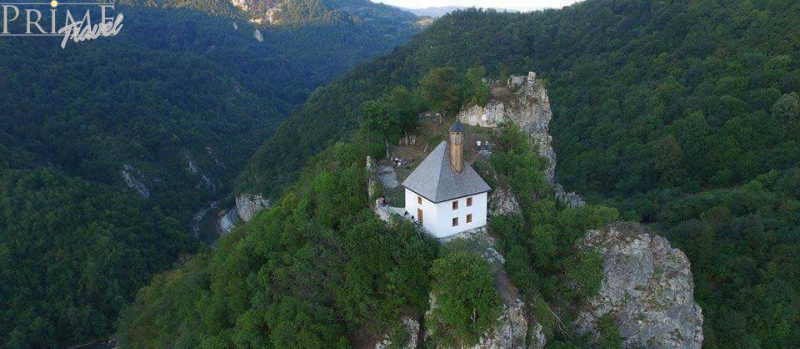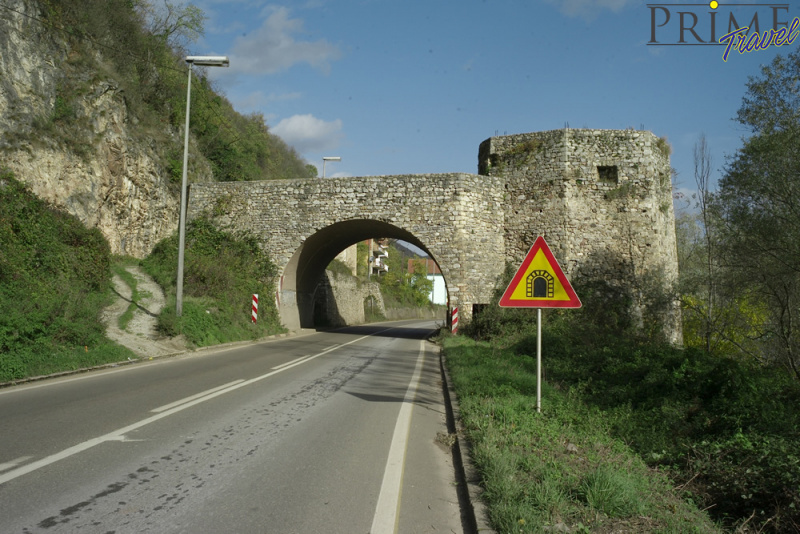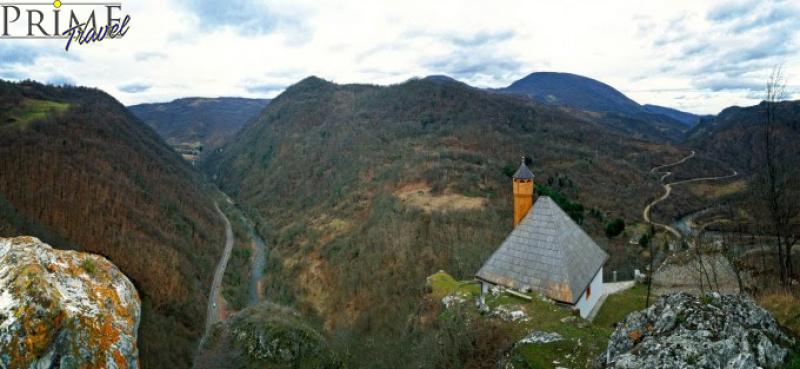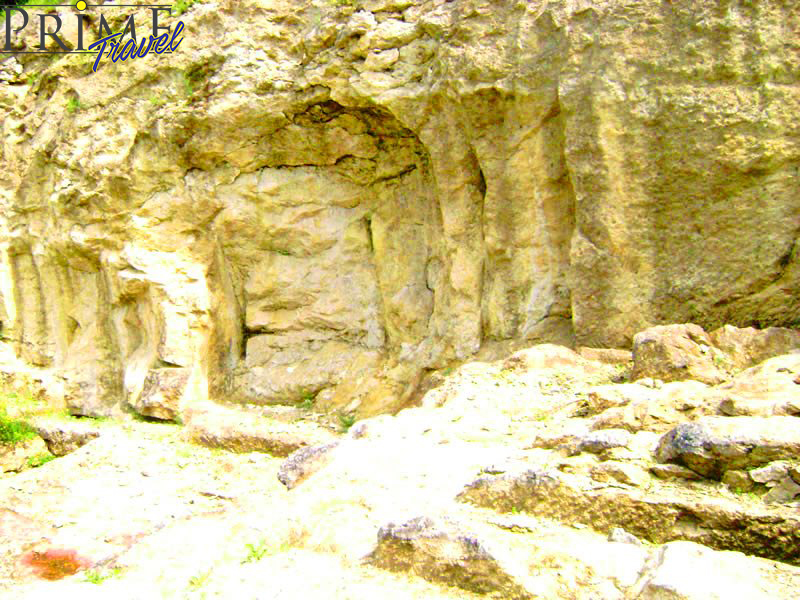



Price: Contact us
Zvornik was in the past known as the old medieval fortress, a town on the Drina River, and as the seat of Zvornik province.
The first time Zvornik was mentioned in 1410 years. Originally it was called Zvonik after the bell tower of the local Franciscan monastery. The fortress is located on a hill Velavnik, and in the foothills of the fortress was developed the suburb (Podzvonik, Subsuonich) with residential, commercial and religious buildings which were connected and protected by walls and towers of the fortress. Its development dictate that the people of Dubrovnik have a strong colony that develops in the period 1415-1432 year. Colony had 640 members and the maximum number reached in 1428, when there were 238. The main activity is silver trade from nearby mines, and crafts. After 1432 years the Dubrovnik colony disperse in Srebrenica and other economic centers in the Podrinje.
In Zvornik was the church of St. Mary and the Franciscan Monastery (1423) which Dubrovnik citizens in their wills leaves in property of Zvornik (1426 - vineyard and horse with a saddle, 1454-15 ducats, 1478 - silver cross of 7 ducats).
The head of the city administration, as a city prince was Milutin Pribisalić (1419-1426). Zvornik had his own city council (Council Purgar) by Saxon model who performed the administration with the city Duke and captain. The castle belonged to the lord brothers´ Zlatonosović family, from the third decade of the 15th century. Despotate (up to 1459). The city first came under Ottoman rule in 1439/1440, and finally the Ottomans occupied Zvornik after the fall of the Despotate in 1459/1460 year.
Sights you can visit in Zvorik:
The medieval fortress Đurđev town
A special feature of the Zvornik gives a three-piece and at the same time unique finding - Lower, Middle and Upper Town, the largest and most distinctive finding in Bosnia and Herzegovina. Zvornik fortress - Đurđev town, as one of the most valuable buildings of its kind in the country was declared as a National Monument of Bosnia and Herzegovina. It is assumed that the fortress was built in the late 13th or early 14th century. The fortress in the 15th century took the despot by whom its name. According to the legend, the fort was built by his wife Jerina therefore the name Jerina city. The fortress was later expanded by the Ottomans during their reign (1460-1878), and upgraded by Austro-Hungarians whose crew was located in the Zvornik fort in the period from 1878 to 1918, todays fortress is a witness to different historical periods.
The city consists three mutually connected parts: lower (by the road from Zvornik to Sarajevo, with a distinctive city gate), central (oldest part, with the Grand Tower high 20 meters in the central part of the fortress) and the Upper Town (on a raised hill above Zvornik, at about 400 m above sea level). Near the fortress there is a church of St. Petka Trnova, which was built on the model of Njegoš chapel with Lovcena.
City gate
City Gate is part of the Lower City as part of the Zvornik fortress, one of the most recognizable symbols of the city. It used to be a space (about 1900.g) on which were military barracks and stables for horses, ammunition dumps and weapons and prisons in which the Turkish era, during the First Serbian Uprising, strangled the famous rebel leader Stojan Cupic, known as PAHULJE.
The gatehouse has been chosen as an official souvenir of the city of Zvornik. Once surrounded by walls and ramparts today is witnessing a time, "story" about its history, and through the ages seeing and welcomes each guest and passerby.
Kasina Building
The building Kasina is architecturally valuable building from Austro-Hungarian period built in the early twentieth century for the needs of the Austrian army. More specifically Kasina dates back to 1910 year and was served as the officer's home. The building is completed in the Art Nouveau style, and one of the most important characteristics of this style is dynamic, wavy lines, decorative and asymmetry. In 1979, the building was modified when it was extended with a reading room on the east side. Dimensions of this independent facility are 16 and 20 meters. It is richly decorated with moldings in the form of geometric forms, as well as the roof cornice.
Kasina building, after the function of Officers home, became a location for Youths and venue of cultural events. She had a great significance because it was a place where the Zvornik citizens hung out through the preparation of entertainment, maintaining ceremonies for individual religious and national holidays, or certain events of national history. Today, this building with a yellow facade is a recognizable city symbol and in it are placed important cultural institutions - Library and Museum collection.
Roman stone quarry in Dardagani
This valuable archaeological founding is located near the town of Zvornik, in Dardagani in the local community Cer. The location is consisting of an underground stone quarry dating from the 1st to the 5th century AD, as well as two open pits. It was the largest Roman stone quarry in the Balkans, and it is assumed that this is the largest and best preserved monument of cave type of Roman stone monuments in Europe. This is a very important region, in which the Slovenian archaeologists discovered that the stone from the quarry was driven to Sirmium, one of the capitals of the Roman Empire. This archaeological site could have significance for the entire cultural offer of RS. For now it is possible to visit only the open pit, while in the very near future are expected a development of project ideas for holiday decorating underground part of the stone quarry.
Medieval Tombstones
In the municipality of Zvornik were recorded a total of 56 necropolis with about 850 tombstones distributed at various locations throughout the municipality of Zvornik (Kozjak, Skočić ...), three of them are with descriptions, and 44 have relief decorations. The special value is that the decoration style of Tombstones were created in in the municipality of Zvornik, in the valley of Hoče. In fact, for this school carving is characteristic a pillar in the form of a medieval sword, and the relief is in the form of vines and bunches of grapes volute. On the tombstones that have labels is used the old version of the Cyrillic alphabet. How valuable tombstones monuments for culture are, is the fact that during the preparation of the project "Nomination of Tomstones - medieval tombstones for inscription on the World Heritage List“, according to UNESCO will be nominated four countries, Bosnia and Herzegovina, Serbia, Croatia and Montenegro.
The medieval town Kuslat
Kušlat is a medieval town, built in the 13th century. This historical monument is located at the mouth of Sails in Drinjaca, 15 kilometers south of Zvornik, on a vertical wall. As an important monument of material culture testifies to us about an elapsed time where the beauty of its appearance, and the power and strength of walls, symbolized the power and prestige of their masters. Evlija Celebija wrote: "This is a round stone town on the bank of the river Jadar, on a cliff that rises to the sky ... The man does not dare to look down into the valley, where the river current roars like thunder."
According to the allegations in Kuslat were a granary, armory, five guns, and Commander (dizidar) on 28 soldiers. The town had 120 houses with gardens, the path to the city arrives is carved in stone, the width of two steps, and has 500 stone steps and stone fence on both sides. Wall on which is built the city is tilted and pointed like an egg.
Ivo Andric noted: "What kind of Bosnian are you when you do not know about Kušlat. It is at that part of the old road that leads from Zvornik towards central Bosnia, and is also known for having built the first mosque in Bosnia. "
The fort was abandoned just before 1833.
Kuslat Mosque
It is a unique facility in our country, which was built in the early Ottoman period in the 15th century, between 1460 and 1480, and is located on a rock next to the road between Zvornik and Konjevic Polje.
The mosque, to which can be reached only on foot, was demolished during the aggression on Bosnia and Herzegovina in the spring of 1993, just like all other mosques and Islamic schools in Podrinje. Renovation began in October 2011, thanks to vakifs lawyer Ali Efendic from Zvornik and his mother, the late Hasibi and family Hujdurović, dr. Senada and Dr. Džemila.
About the Kuslat Mosque wrote the famous traveler Evlija Celebija and Nobel Prize winner Ivo Andric. Celebija says for this mosque that it is Abu'l Fath (Mehmed II Fatih), while Andrić, explains where the Kušlat is, and that there was build the first mosque in BiH. The writer Andric wrote: "What kind of Bosnian are you when you do not know about Kušlat. It is at that part of the old road that leads from Zvornik towards central Bosnia, and is also known for having built the first mosque in Bosnia. ". Muslims from all over the country have visited this mosque, and Sufis, led by Mehmed Effendi Hafizović came and performed dhikr. To the mosque on Kuslat came and ulema from Cairo, Istanbul and Medina, and visited by the sheikhs, dervishes and poets.